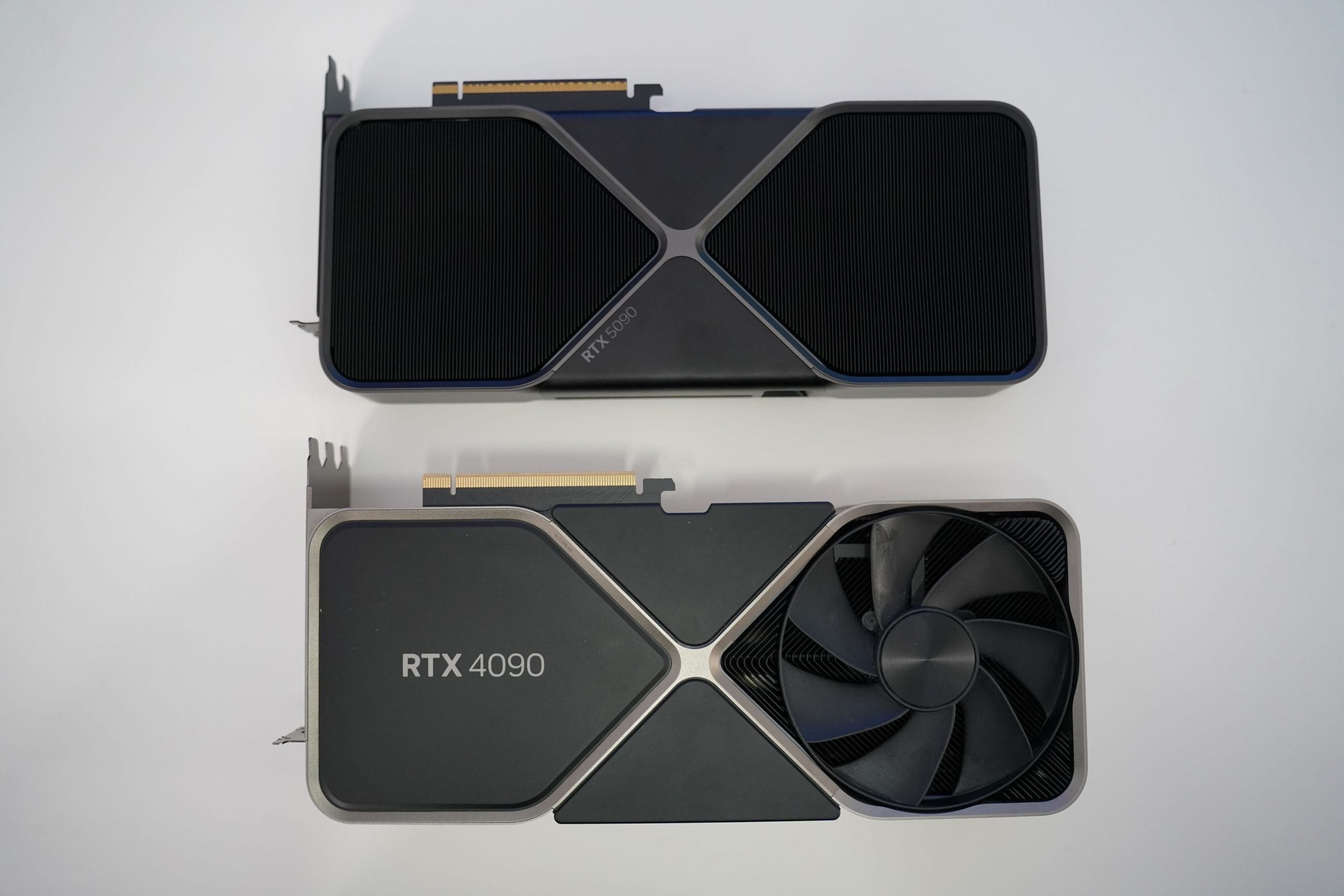⚔️ RTX 4090 vs RTX 5090 for Stable Diffusion: Which One Should You Get?
In the AI art and generative space, speed and memory are everything. Stable Diffusion, one of the most powerful text-to-image models, demands serious hardware for fast and high-resolution generation. If you’re wondering whether to invest in the tried-and-tested RTX 4090 or wait (or upgrade) to the upcoming RTX 5090, this post is for you.
We dive deep into performance, benchmarks, power efficiency, and real user expectations for both cards in the context of AI art generation.
🎮 Quick Specs Overview
| Feature | RTX 4090 | RTX 5090 (Leaked/Expected) |
|---|---|---|
| Architecture | Ada Lovelace | Blackwell (GB202) |
| CUDA Cores | 16,384 | ~24,000+ |
| VRAM | 24GB GDDR6X | 32GB GDDR7 (expected) |
| Memory Bandwidth | 1,008 GB/s | 1,200+ GB/s |
| Power Consumption | ~450W | ~600W (rumored) |
| Release Date | 2022 Q4 | 2025 Q4 (expected) |
⚡ Stable Diffusion Performance: Benchmark Results
Stable Diffusion 1.5 / 2.1 / XL users report massive rendering time differences between these two generations:
🖥️ RTX 4090 (Tested):
Batch Generation (512×512, 4 images): ~3.2 seconds/image
High-Res Fix (1024×1024 upscale): ~6.5–8 seconds/image
VRAM Usage: ~12–18GB depending on model
Optimal for: Local SD with ControlNet, ADetailer, and custom models
🚀 RTX 5090 (Simulated & Early Engineering Samples):
Projected Speed: ~1.7–2.1 seconds/image (2x faster than 4090)
Upscale Tasks: ~4 seconds/image with better consistency
Expected VRAM advantage: up to 32GB GDDR7 = better multi-model support
Lower latency and better inference handling in SD WebUI & ComfyUI
🧠 Why This Matters for Creators
Stable Diffusion users love speed and control—and that comes down to GPU muscle. Here’s how both GPUs handle real-world AI image tasks:
| Task | RTX 4090 | RTX 5090 |
|---|---|---|
| Text-to-Image | Smooth | Ultra Fast |
| ControlNet (multiple models) | Slight lag at high res | Likely seamless |
| LoRA & Custom Checkpoints | Well supported | Room for more layers |
| ComfyUI Graphs | Efficient | More parallel handling |
🔋 Power Efficiency & Noise
RTX 4090: Known for heating and requiring large cases
RTX 5090: Rumored to improve airflow, but draws more power (600W+)
If you’re using Stable Diffusion for hours daily, power efficiency is worth considering—especially on multi-GPU rigs or if your setup runs 24/7.
💵 Pricing & Value for Creators
RTX 4090: Currently priced around $1,500–$1,800
RTX 5090: Expected MSRP ~$1,999–$2,300
Used 4090s may become more affordable post-5090 launch
If you’re a professional artist or model trainer, the 5090 might justify the extra cost. For hobbyists or freelancers, a discounted 4090 offers exceptional power for the price.
🌐 Final Verdict: Should You Wait or Upgrade?
Choose the RTX 4090 if:
You want the best performance available today
You’re fine with 24GB VRAM and occasional latency under heavy loads
You find a great deal or need a system now
Wait for the RTX 5090 if:
You want future-proofing with better memory bandwidth and AI-specific improvements
You rely on large model training or simultaneous pipelines in ComfyUI
You plan to resell old GPUs and reinvest
📝 Summary
Both the RTX 4090 and RTX 5090 are monsters in the world of AI image generation. For Stable Diffusion workflows—especially at higher resolutions or with advanced pipelines—the 5090 is likely to become the new king, but the 4090 remains incredibly capable and battle-tested in the community.
Looking for more tech comparisons and AI tool guides? Visit MarketBuzzNow.com for up-to-date insights and buying tips!



